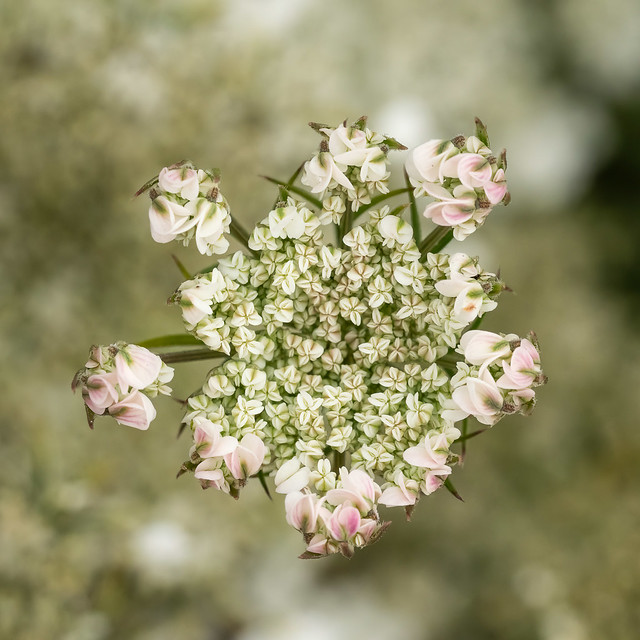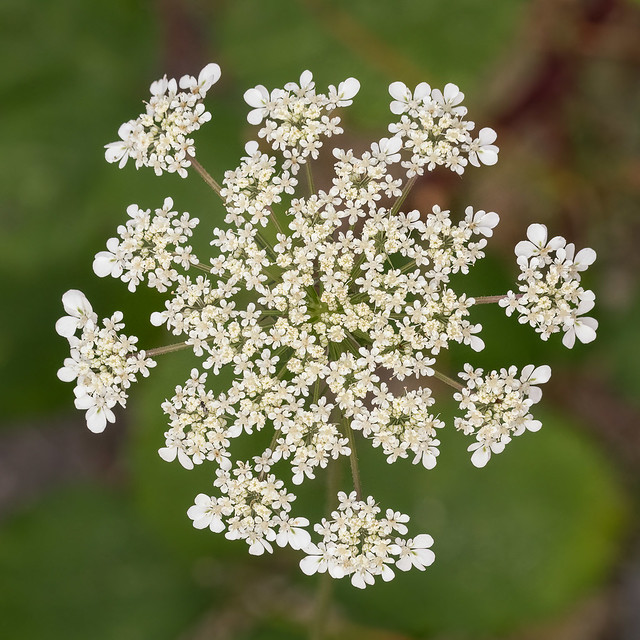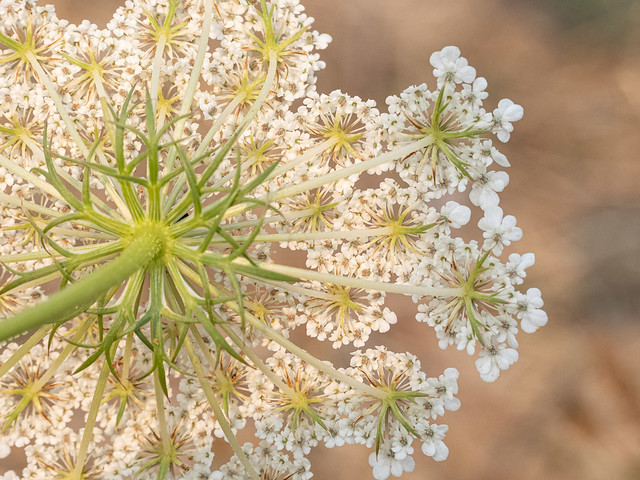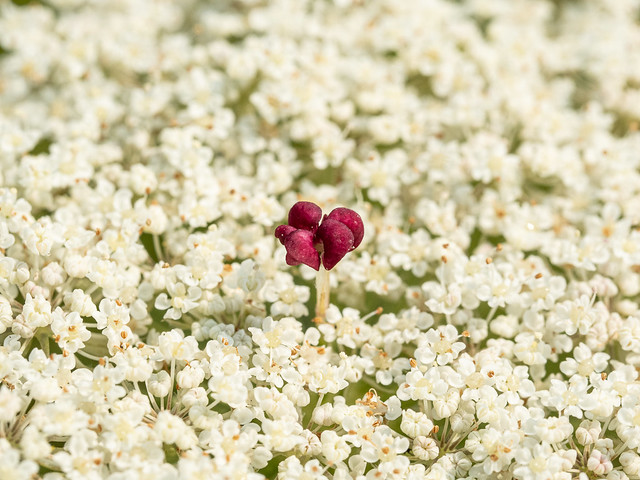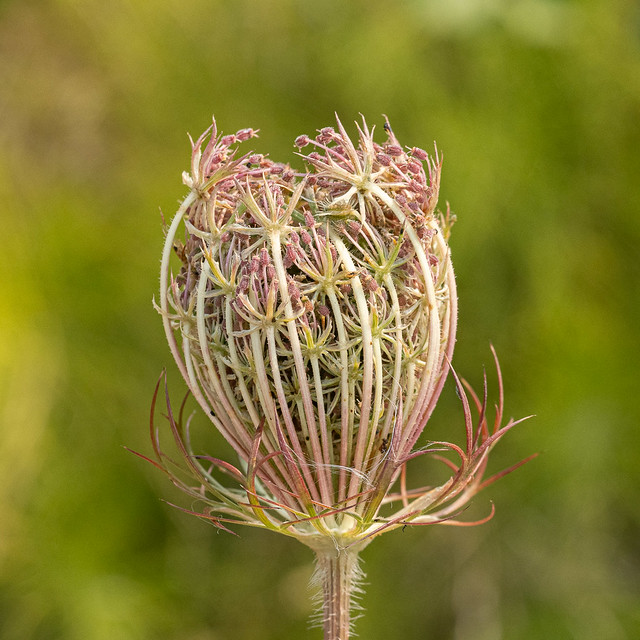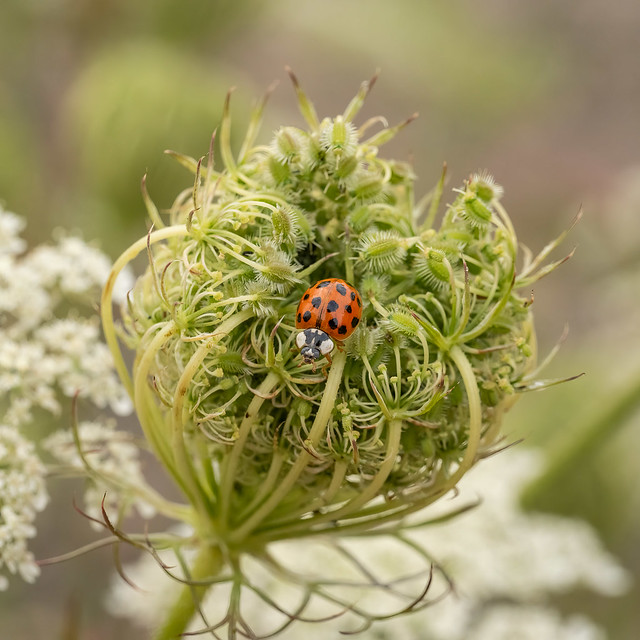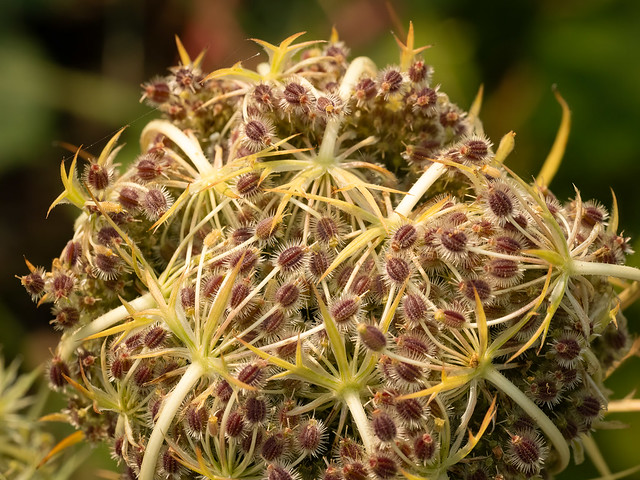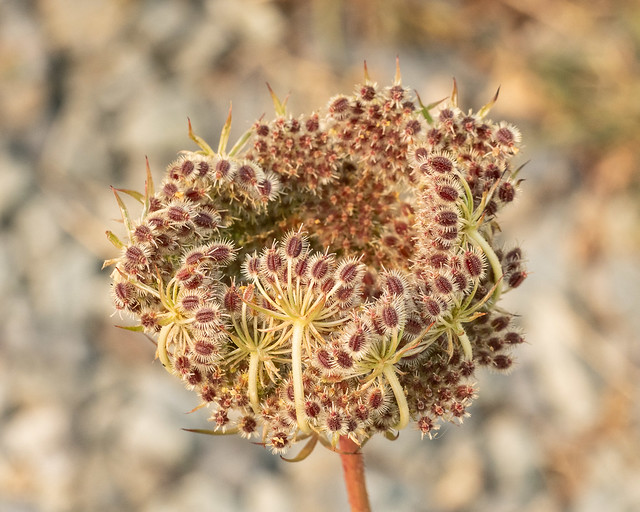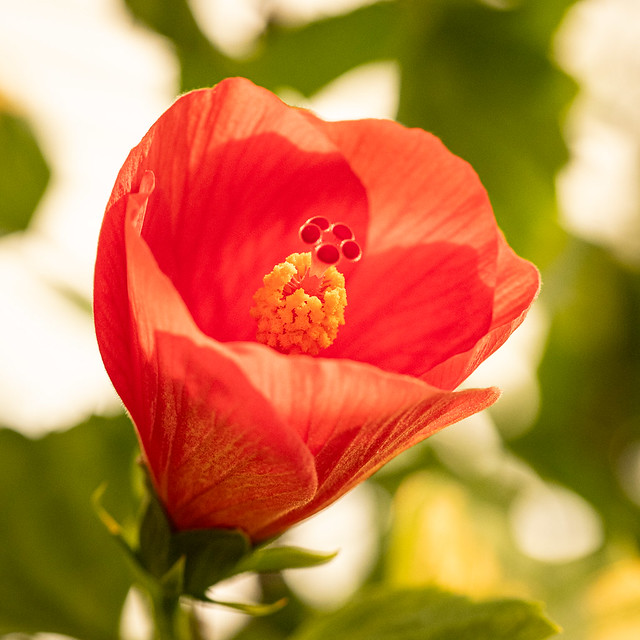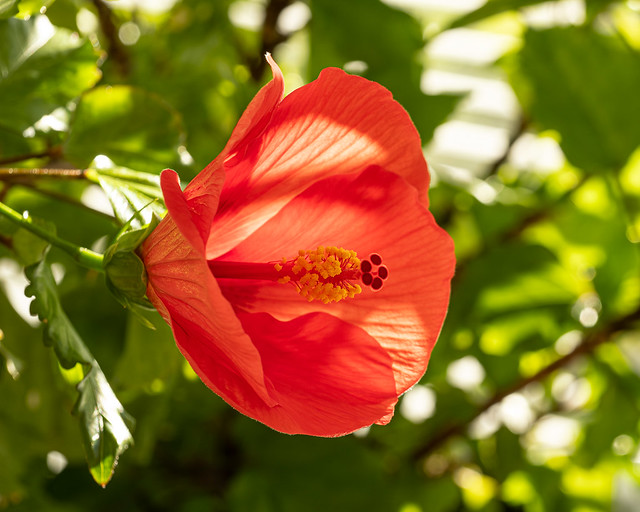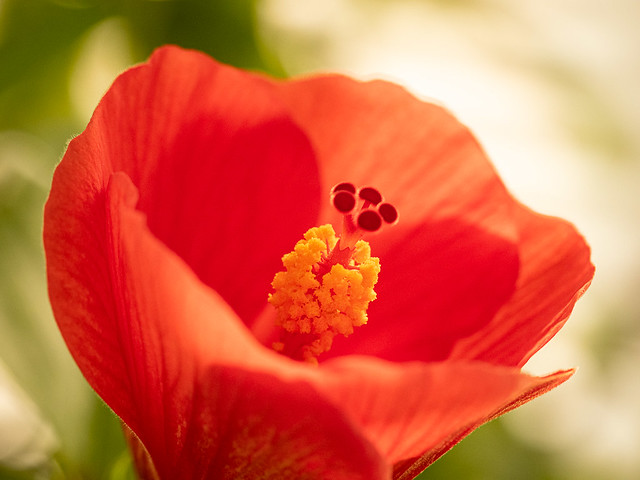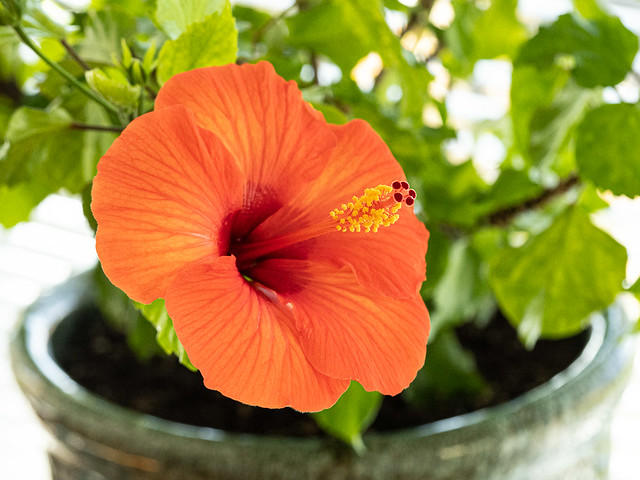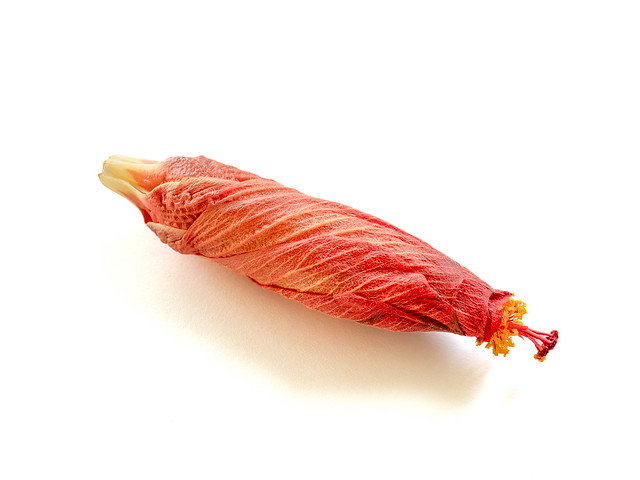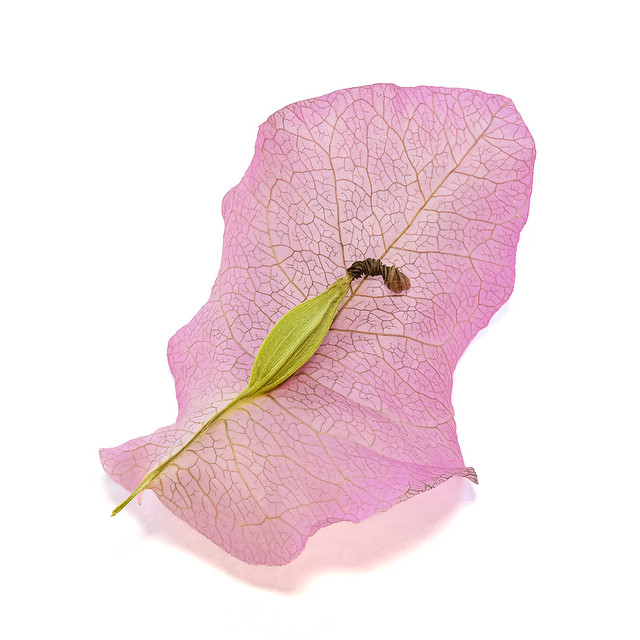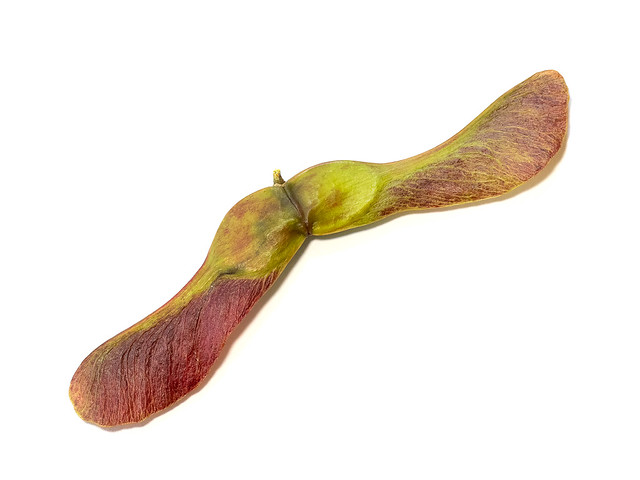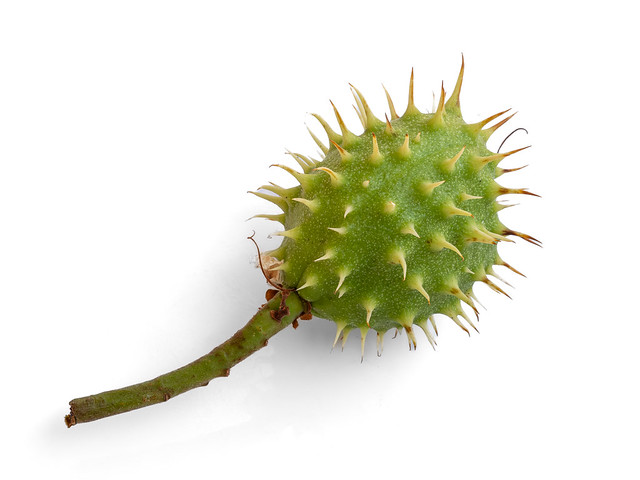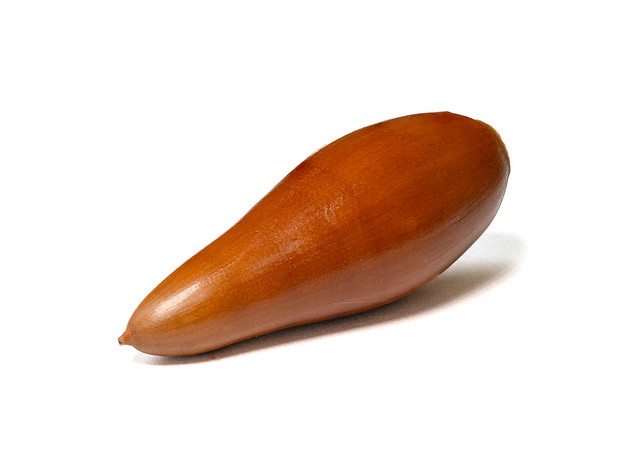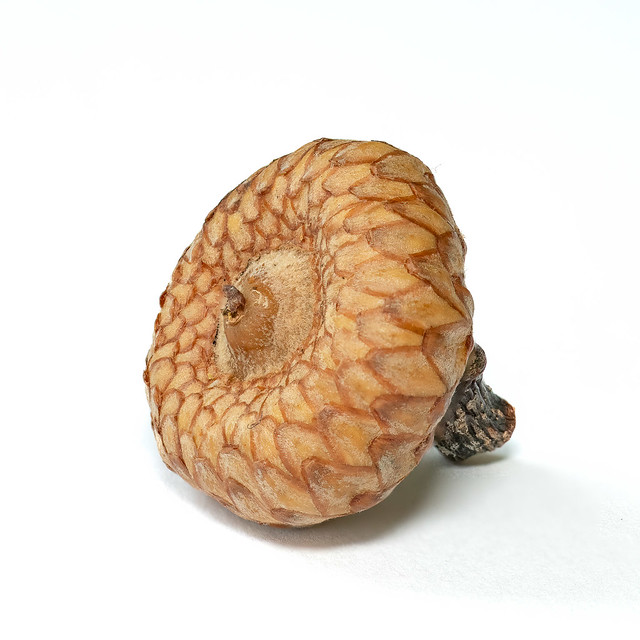I avoided it up till now, but Covid finally got me. I had a few days of feeling awful, and a few more with no energy, but after that I recovered fairly quickly. Although I'm still testing positive, despite no symptoms for days. On a couple of the recovery days I went out for walks with my camera along the railway tracks. It's not exactly the wilderness, but it's overgrown and there are a variety of plants and insects.
Before I even made it out of the yard I spotted this spider beside the garage. I thought it was something different, but it turned out to be the usual Cross Orbweaver. It just looked different because I was looking at the underside. In any case it was quite cooperative with being photographed. Even shining light on it.
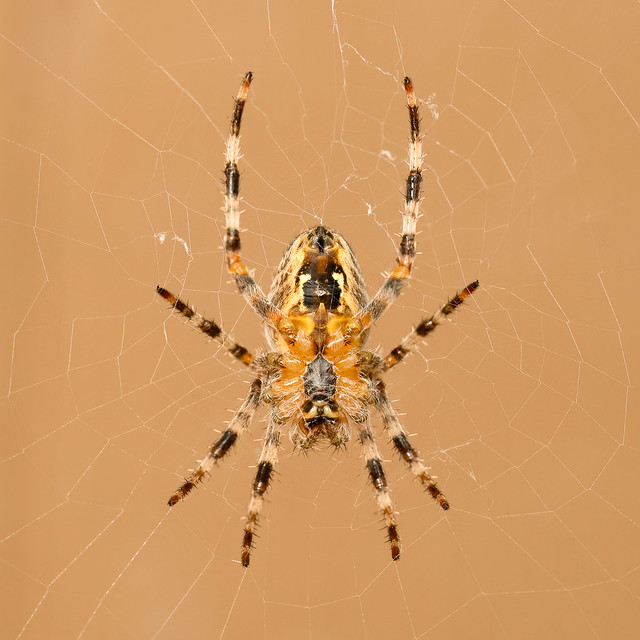
Another one in our yard. At the time I thought this was just a house fly, but I think it's one of the Tiger Flies
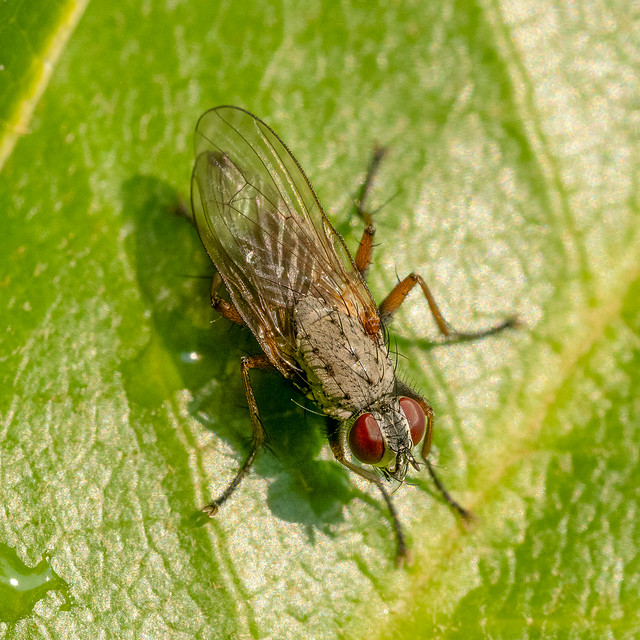
Continuing the fly theme, this shiny one is a Common European Greenbottle. (Is there anything that's not invasive around here?)
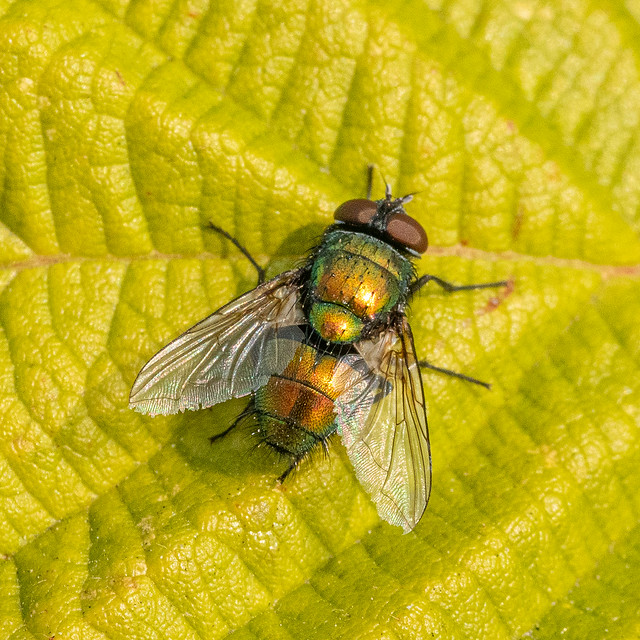
Some of the flies look a lot like the honey bees. I'm not sure if that's deliberate mimicry so predators will leave them alone? I think this is a Common Drone Fly. The following one is a honey bee.
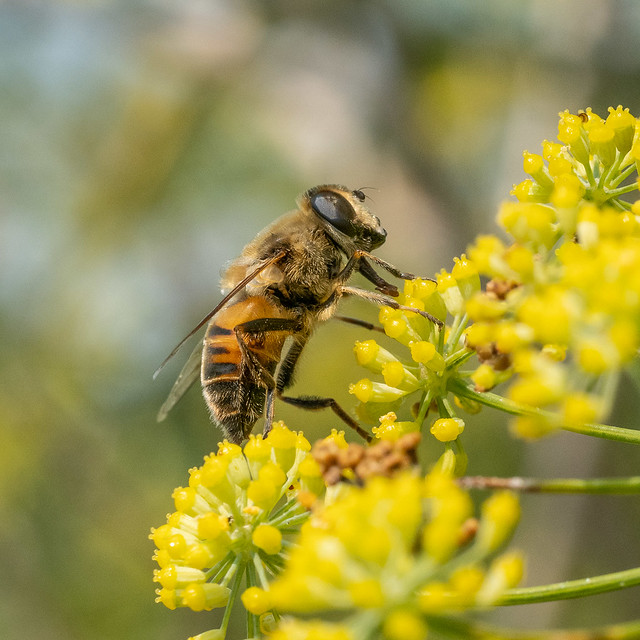
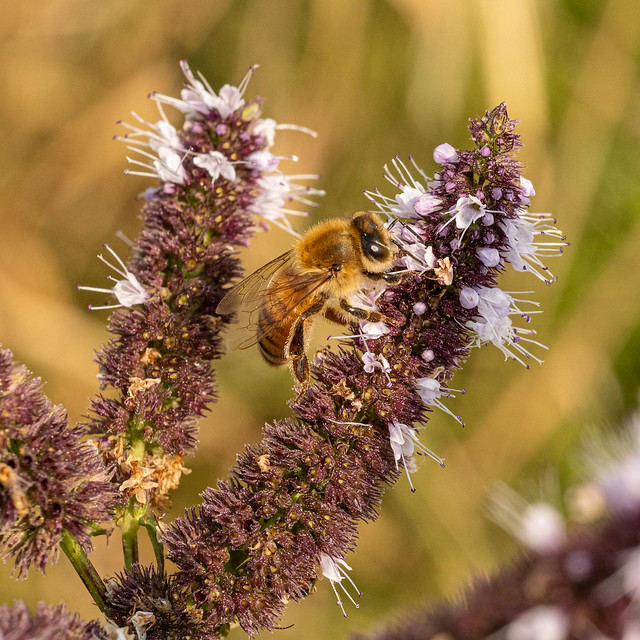
This cute little one is a Yellow-haired Sun Fly
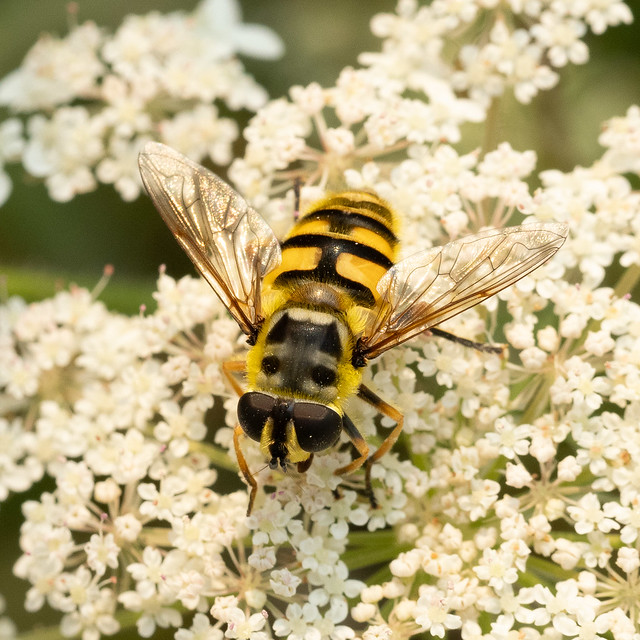
There is one spot where there are lot of Asian Lady Beetles.
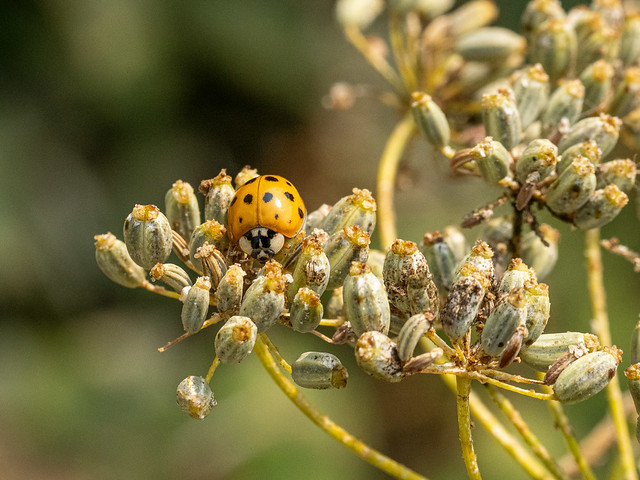
And earlier there were (not surprisingly) lots of lady beetle nymphs. These aren't the nymphs themselves, they're shed skins.
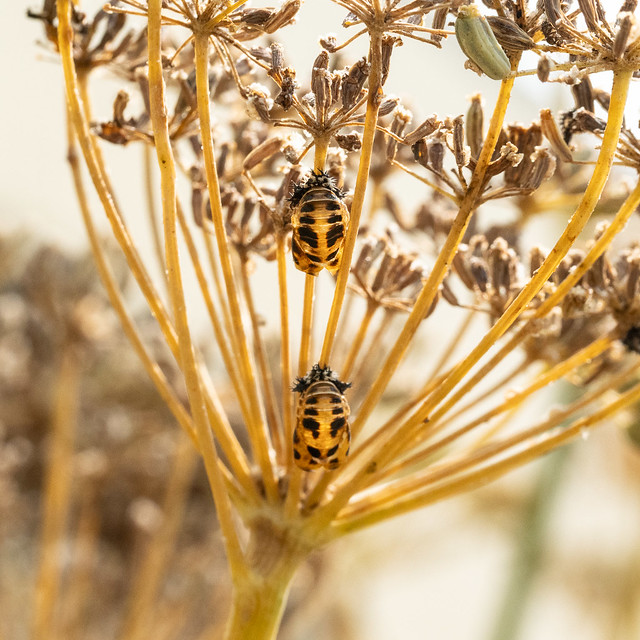
Most of the wasps were European Paper Wasps. We have native paper wasps, but the European ones are more adaptable and are taking over. I also saw a white faced hornet but didn't get a good photo.
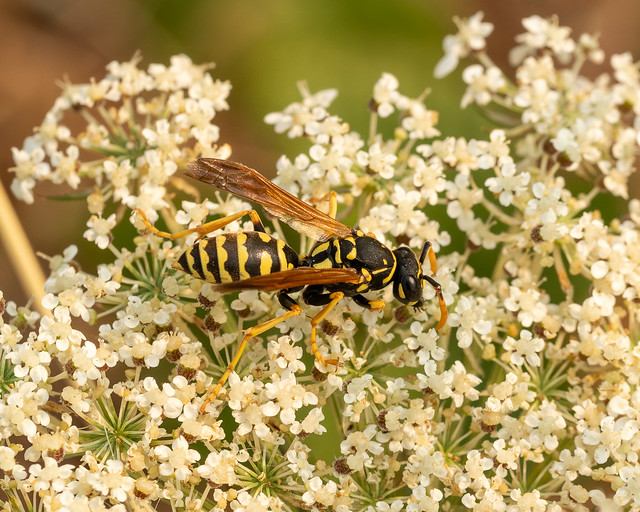
My "best" find were these Stilt Bugs. (true "bugs" i.e. Hemiptera) I was photographing a flower and went to brush away a little stick, when I realized it was alive. The were about the size of mosquitoes. Despite their tiny size, I managed some decent photos. I thought they were new to me, but I see on iNaturalist that I've spotted them once before. I like the bright red eyes and the long antennae.
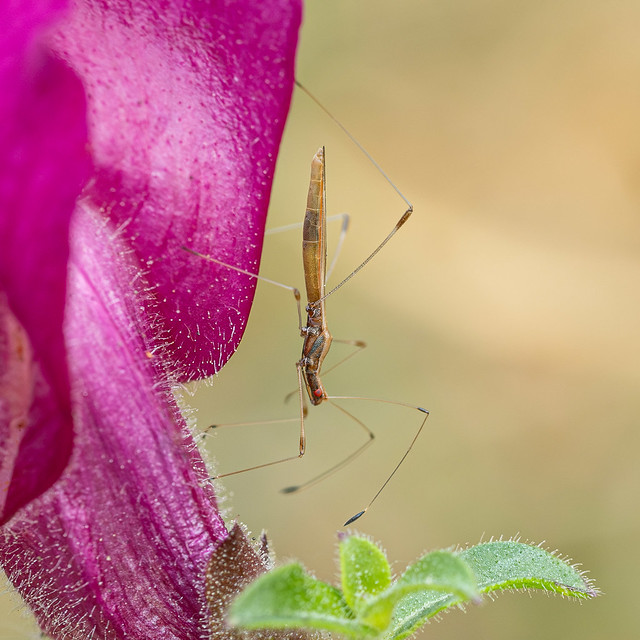
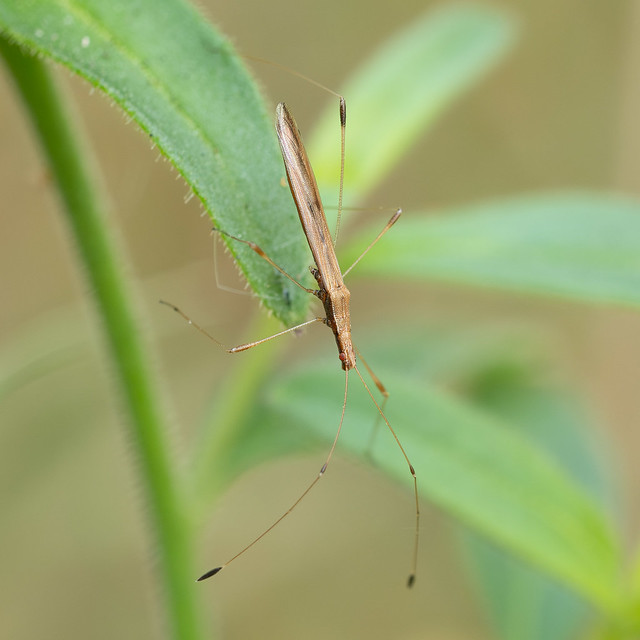
See all 20 photos in this batch

